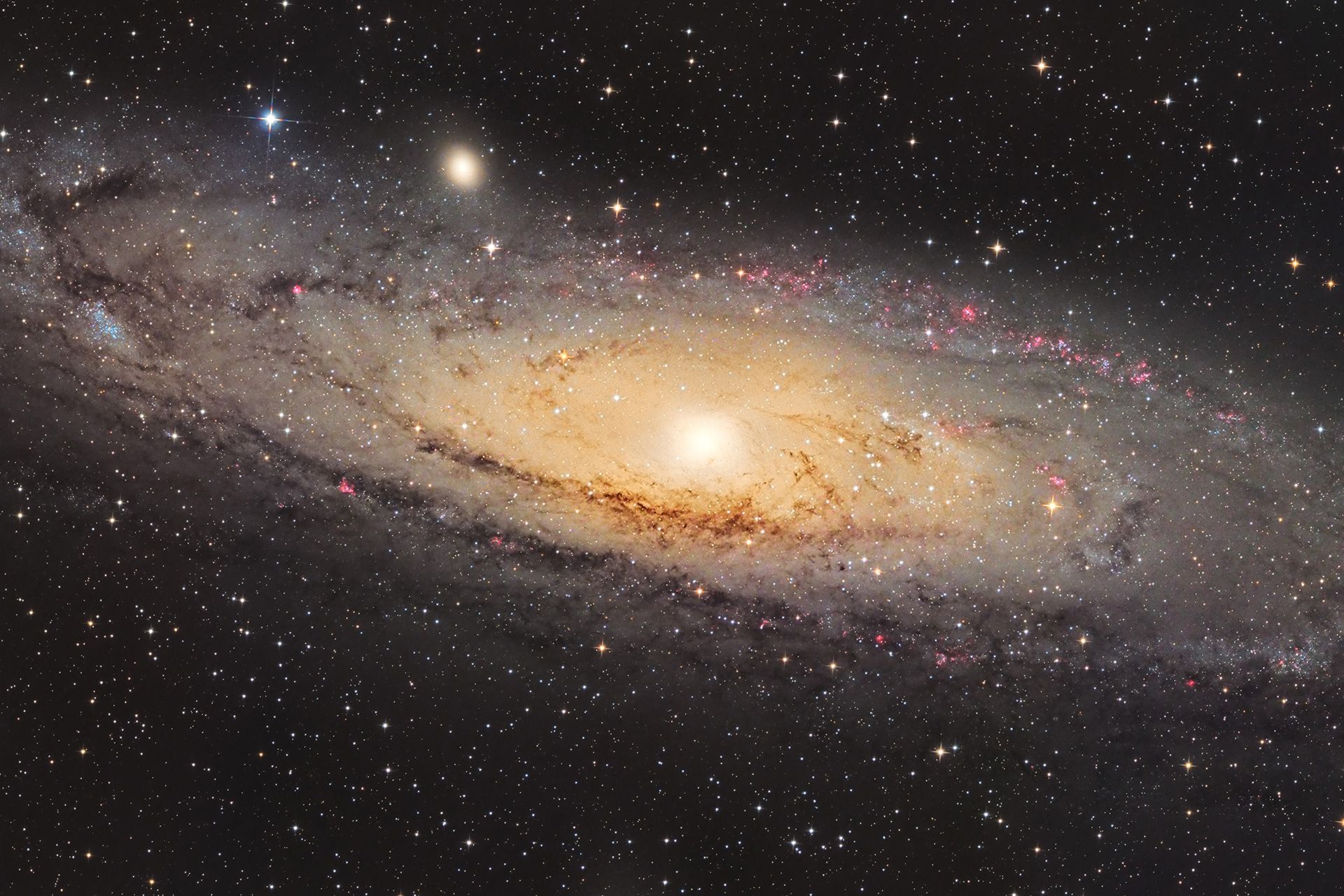Technical card
M31 Andromeda Galaxy
Dates: August 2021
Locations: Zürich City, Switzerland
- Camera: ZWO ASI1600MM Pro
- Mount: Ioptron CEM70
- Telescope: SharpStar 20032PNT
Exposure Details: Total integration time: ~20 hours, Subs: 3500 x 10" Luminance, 700 x 30" RGB, 90 x 180" Ha
Information from the author
This photography is a 3x1 Mosaic picture taken in August 2021 over the course of 4 nights.
The Andromeda Galaxy is located between the constellation of Andromeda and Cassiopeia. It's the closest galaxy to our milky way and one of the few large bright objects that are barely visible to the naked eye. The Milky Way and Andromeda galaxies are expected to collide in around 4-5 billion years, merging to form a giant elliptical galaxy or a large lenticular galaxy.
Due to the close proximity, the Andromeda galaxy played a major role in the discovery of galaxies as such. Immanuel Kant, the great German philosopher already coined the term "Island Universe" with his theory that there are multiple "universes", extragalactic objects consisting of many stars (1755). At that time no observational evidence to support this model existed but, surprisingly, Kant was right! It's only 100 years ago in 1920 when observations in the Andromeda Galaxy resulted in the "Great Debate" between the astronomers Shapley and Curti. At that time, it was generally accepted that our Milky Way is the entirety of our universe and that the Andromeda Nebula was an object within our Galaxy. Curti believed that Andromeda was an external object outside of our local system. It was in the same year in late 1920 when Edwin Hubble confirmed by many observations, that the Andromeda Galaxy is indeed extragalactic and later on discovered many more distant galaxies in our universe.




